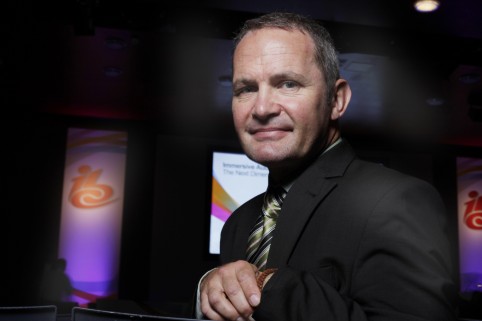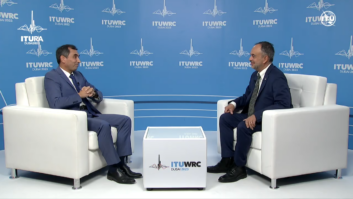
The experienced IBC visitor may have noticed that the EBU is not showcasing the loudness topic as much as it did five years ago. The reason is simple: there is no immediate burning need to do so, even though the work on the topic is still continuing and spreading well beyond the scope of the EBU Group, PLOUD.
The uptake of the EBU Loudness Recommendation EBU R 128 has been an enormous success since its publication at IBC in 2010. Five years later, over 80 manufacturers support the EBU’s loudness metering and normalisation approach in their products – ranging from studio meters to quality control equipment – while broadcasters in the majority of countries in Europe have started using R 128 loudness normalisation, or are in the process of doing so.
The waves this true audio revolution created have also reached major online platforms, music production and the cinema industry, even though the implementation of loudness normalisation in these latter domains is still further away from Nirvana than in European broadcasting. Several key PLOUD Members are very active in these areas which are linked to the core business of broadcasting.
Processor religion
With TV being such a success, let’s look at some of the more ‘thorny’ loudness questions relevant for broadcasters. The first has to do with a myth: ‘loudness processors at the end of the chain are magic.’ They are not. And they certainly cannot do magic when they are used in standalone mode, which means without any prior knowledge of what comes along.
It may be tempting for stations to simply put a ‘loudness box’ at the output of their facility and not (re)educate their mixers or perform transparent offline loudness normalisation, but the practical result is most likely to be ‘sausage sound’, as the processor could heavily level the audio to be sure it fits the loudness target level (-23.0 LUFS for R 128).
This is totally against the spirit of the PLOUD work, which actually promises freedom to use more dynamics (if desired), while still sounding equally loud when compared to heavily squashed programmes. The good news is that it seems awareness on this subject is raising and the concept of ‘get/mix it right at the source’ instead of ‘fix it at the end’ is gaining traction. If an end-stage loudness processor is being used, it should at least be steered by the programme schedule so it knows when to go into ‘bypass’ mode, avoiding re-normalising and thus altering already R 128 compliant material!
Short content =
short metering
The different ways in which broadcasters handle short form content, such as commercials, promos, interstitials, etc. is another practical point to consider. In order to avoid such short pieces of content upsetting the audience by being suddenly too dynamic, stations have specified their own additional constraints on the audio mix. In an effort to harmonise these approaches, the EBU published a supplement to its loudness recommendation: R 128s1 at the beginning of the year. The ‘s’ in its name stands for supplement, not for short, although the specification can be summarised on the back of an envelope.
The basic idea is that for short-form content the Integrated Loudness target level of -23.0 LUFS (±0.5 LU) still applies, but that additionally the content cannot go above -18.0 LUFS on a Short-term or -15.0 LUFS on a Momentary loudness meter. One could argue a single recommendation for short-form content would be even better, but the limitation of the options to the above two (quite similar) normalisation approaches already should help many short-form content creators in their mixing work. The EBU strongly recommends that these parameters (summarised below) be used for every short-form programme on the continent – and even universally.
Balancing ballistics
Another area where harmonisation is being targeted is the small differences between the EBU and the ITU metering specifications. Although the two are very well aligned since the adoption of the ‘EBU Mode’ into the ITU specifications, there are still some subtle differences in the specifications, including a 400 ms Infinite Impuls Response (IIR) low-pass filter that is defined in the ITU specification, but which is absent in the EBU’s Finite Impuls Response (FIR)-based only approach.
The impact on measurements is small, but the metering ballistics is different. Ongoing research at the Luleå University in Sweden may shine more light on the optimum approach, which may pave the way for future harmonisation. The EBU Momentary Meter is the industry’s de-facto standard, by the way.
PLOUD focus
This year, the EBU PLOUD Group has – besides the short-form specification – published new versions of its core loudness specifications, including EBU Tech 3343: Practical guidelines for Production and Implementation in accordance with EBU R 128 which allows users to profit from the experience gained in the day-to-day use of loudness normalisation across the globe.
The focus of the Group has largely remained on television, although several broadcasters have started using loudness normalisation in their radio facilities, too. For instance, the German public radio stations have announced to gradually switch over to loudness normalisation in production by the end of 2015.
Another key area that has gained loudness interest over the last 12 months is online platforms. Earlier this year, YouTube added loudness normalisation to its platform (even though at a rather high level) and portable music players. For the latter, the introduction of a loudness-based dose measure may improve both the safety and quality of the users’ audio experience.
This could directly help broadcasters, as their streamed content is more often consumed via portable devices. A single loudness level or a simple way to automatically adapt the level to loudness-normalised platforms with a different target level would streamline broadcast operations and make the audio chain more predictable.






